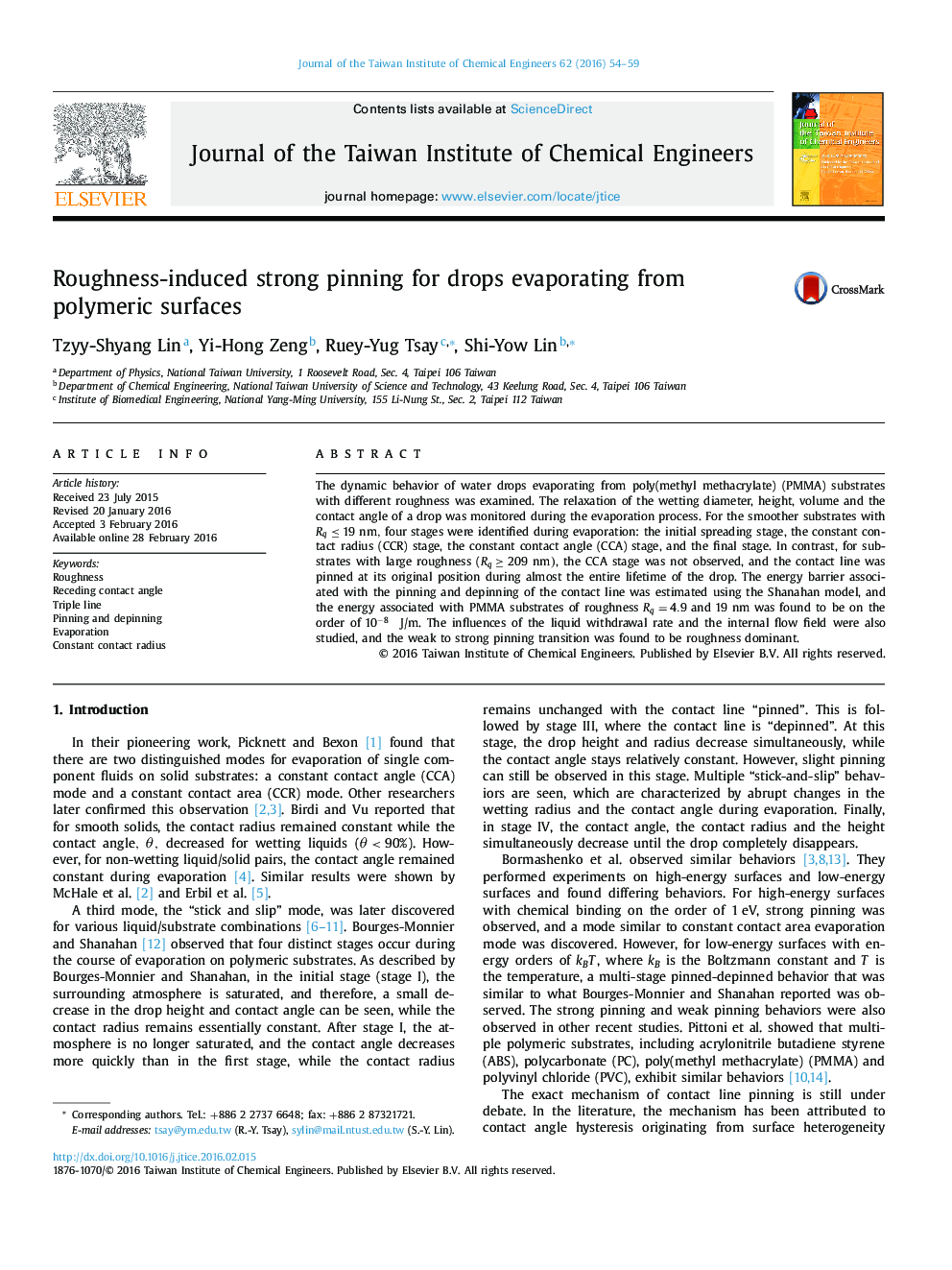| Article ID | Journal | Published Year | Pages | File Type |
|---|---|---|---|---|
| 690304 | Journal of the Taiwan Institute of Chemical Engineers | 2016 | 6 Pages |
•Dynamic behaviors of water drops evaporating from PMMA substrates were examined.•The CCA mode and receding CA were not identified for evaporation on rough substrates.•Increasing roughness induced a transition from weak pinning to strong pinning.•An energy barrier for depinning on the order of 10−8 J/m was estimated from the data.•Flow field had a negligible effect on the roughness-induced transition.
The dynamic behavior of water drops evaporating from poly(methyl methacrylate) (PMMA) substrates with different roughness was examined. The relaxation of the wetting diameter, height, volume and the contact angle of a drop was monitored during the evaporation process. For the smoother substrates with Rq ≤ 19 nm, four stages were identified during evaporation: the initial spreading stage, the constant contact radius (CCR) stage, the constant contact angle (CCA) stage, and the final stage. In contrast, for substrates with large roughness (Rq ≥ 209 nm), the CCA stage was not observed, and the contact line was pinned at its original position during almost the entire lifetime of the drop. The energy barrier associated with the pinning and depinning of the contact line was estimated using the Shanahan model, and the energy associated with PMMA substrates of roughnessRq=4.9and 19 nm was found to be on the order of10−8J/m. The influences of the liquid withdrawal rate and the internal flow field were also studied, and the weak to strong pinning transition was found to be roughness dominant.
Graphical abstractFigure optionsDownload full-size imageDownload as PowerPoint slide
